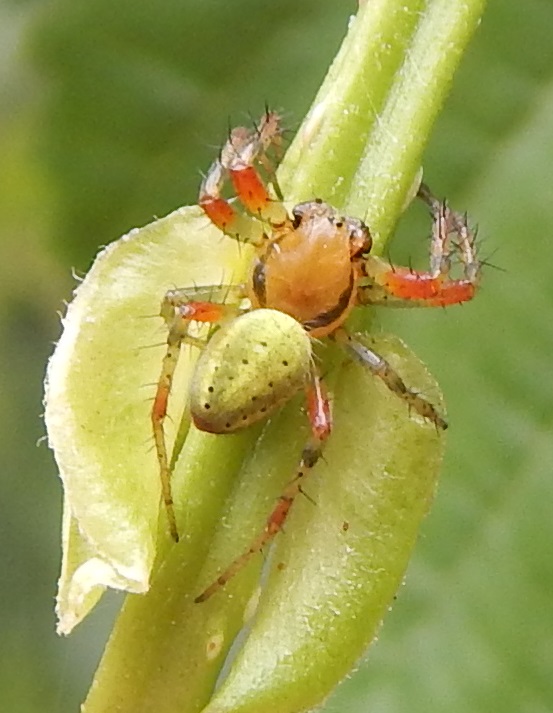
[031] Araniella cucurbitina, Cucumber Spider
Introduction
Araniella cucurbitina, the Cucumber Spider, is a small green spider named for its colour, sometimes called the Cucumber Green Spider. (It’s not the only spider sometimes called this!)
I will also consider several other spiders but my randomization process means that some more common ones will come later.
Taxonomy
Kingdom – Animals
Phylum – Arthropods
Class – Arachnida
Order – Araneae
Family – Araneidae
Genus – Araniella
Scientific Name – Araniella cucurbitina
This one is in the same family as [030] Garden Spider.
I will list and consider separately a few other spiders.
Cucumber Spider
After yesterday you can see that Araniella means a little spider. Cucurbita is Latin for plants in the gourd family (including cucumber)
Araniella cucurbitina is a small spider and a large part of its body has a green colour that could be associated with cucumbers.
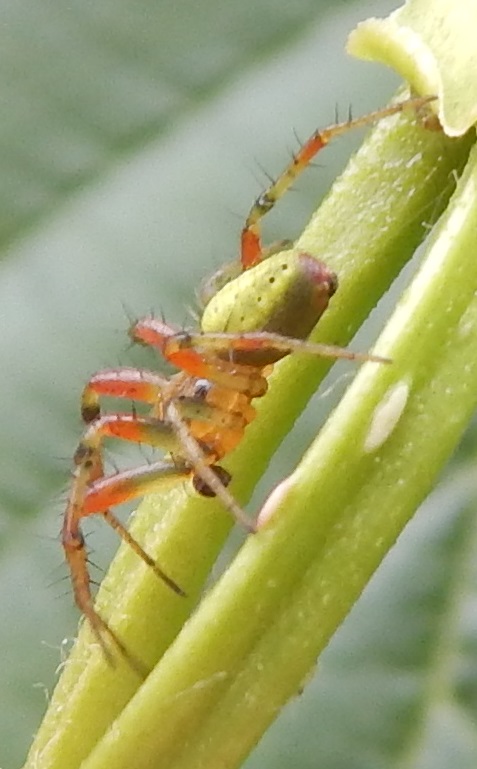
It is widespread over nearly all of Europe and most of Asia. It is an orb-weaver like the Garden Spider and does not hide out of the way because of its camouflage.
The following random list includes some other spiders I have been able to photograph.
Amaurobius
Amaurobius ferox is a large spider, which comes from its own family, Amaurobiidae. It is found across Europe and likes dark spaces, often found indoors. It has an interesting mechanism for reproduction.

The mother lays a clutch of eggs. When they hatch, she lays another set of eggs for them to eat. Then a few days later she actively encourages her offspring to eat her.
Clubiona
Clubiona Species, also in its own family, Clubionidae (Sac Spiders) There are about thirty British species, widespread in the South of England. Generally found in leaf litter, sometimes in houses. I can’t remember where I found this one.
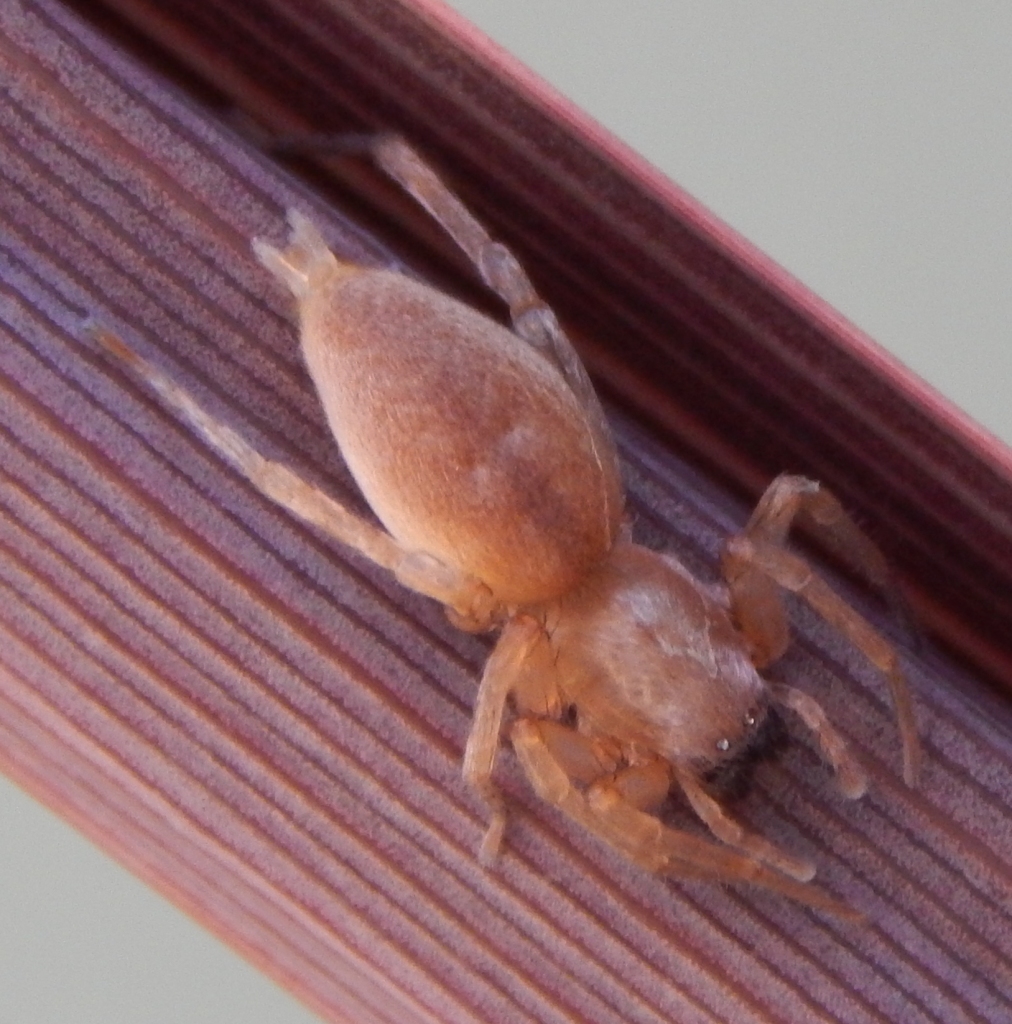
Nursery Web Spider
Pysaura mirabilis, the Nursery Web Spider is a member of the family Pysauridae, also called Nursery Web Spiders.
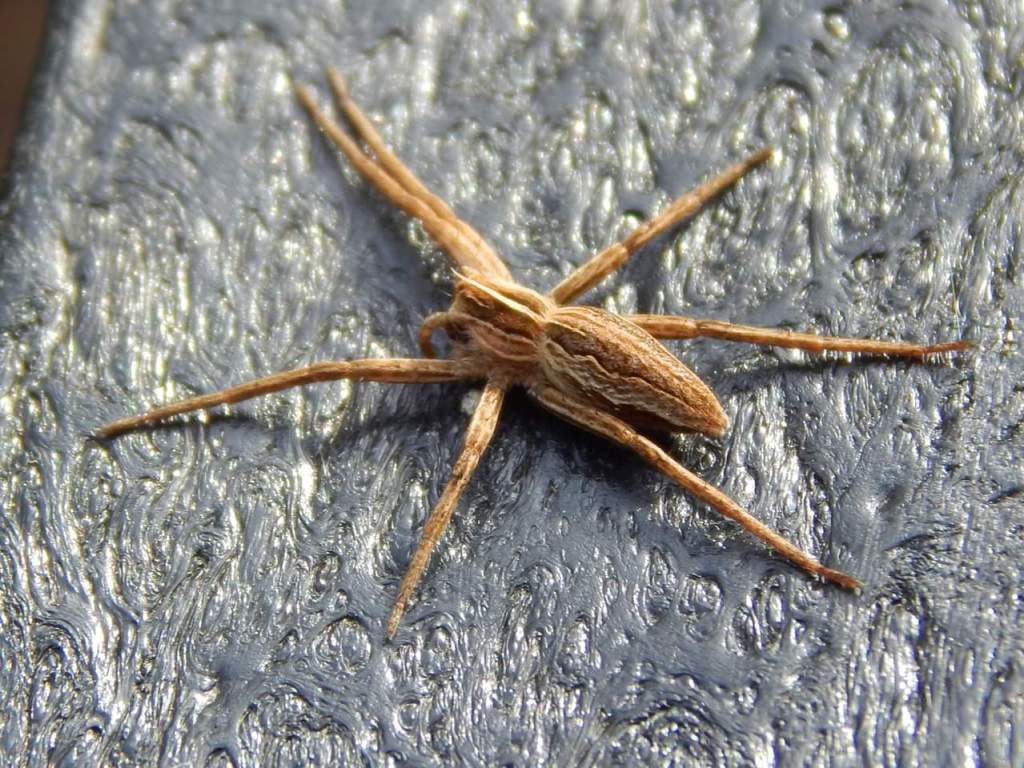
The female carries here egg sacs with her jaws and pedipalps unlike wolf spiders, which attach them to their spinnerets. Like wolf spiders, they are roaming hunters.
Philodromus
Philodromus dispar, a crab spider from the family Philodromidae, does not build a web. Found all over Europe, it’s an agile hunter that remains stationary and waits in ambush for its prey.
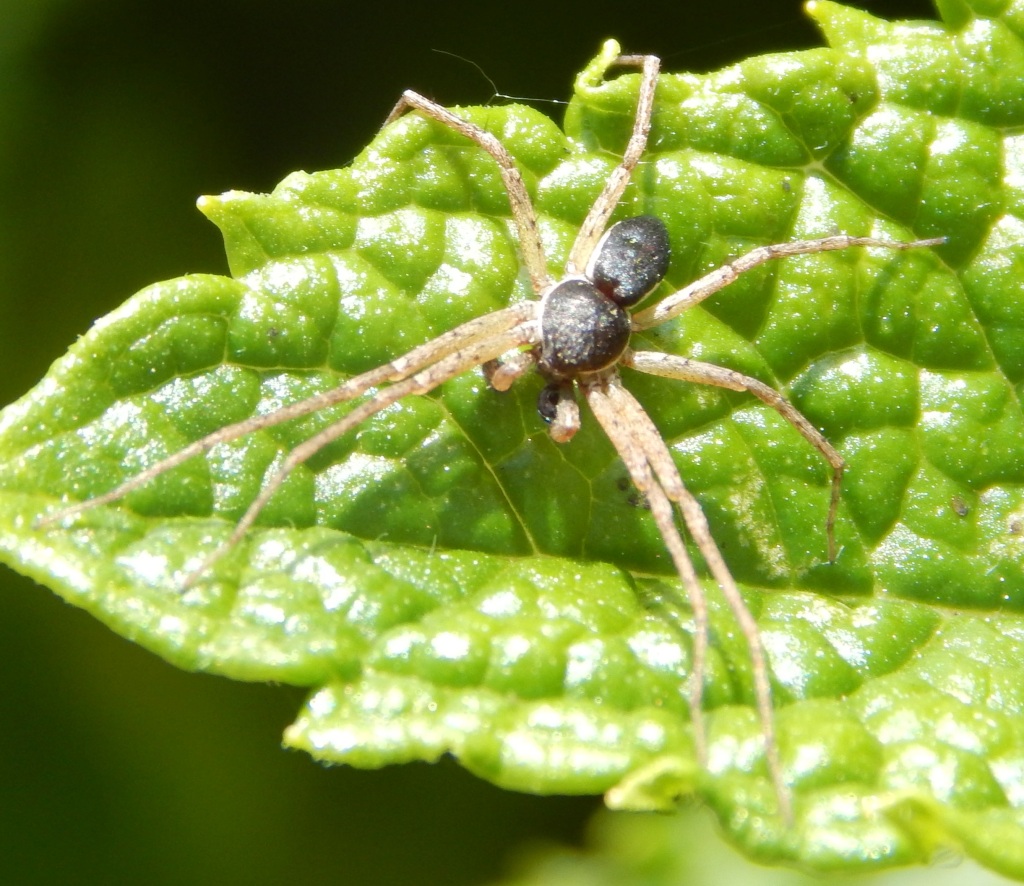
Steatoda
Theradiidae is a large diverse family of spiders. It includes some called Black Widow Spiders or Brown Widow Spiders, some of which have potent and dangerous bites. (The name Widow Spiders comes from the tendency of the female to eat the male after mating, which may not be much different in prevalence to spiders in general.)
Steatoda nobilis and Steatoda grossa are both sometimes found in homes and both are known as false widows because of their similarity. (S grossa is a native species. S nobilis originates from Madeira and the Canaries but has been spreading through Britain for well over a hundred years.)
Both weave an irregular web to catch their prey.
They can give a painful bite but rarely do so as they are not aggressive. Local newspapers and media frequently report scare stories about them but they are not dangerous.
This male Steatoda grossa was at one time a resident in my house.
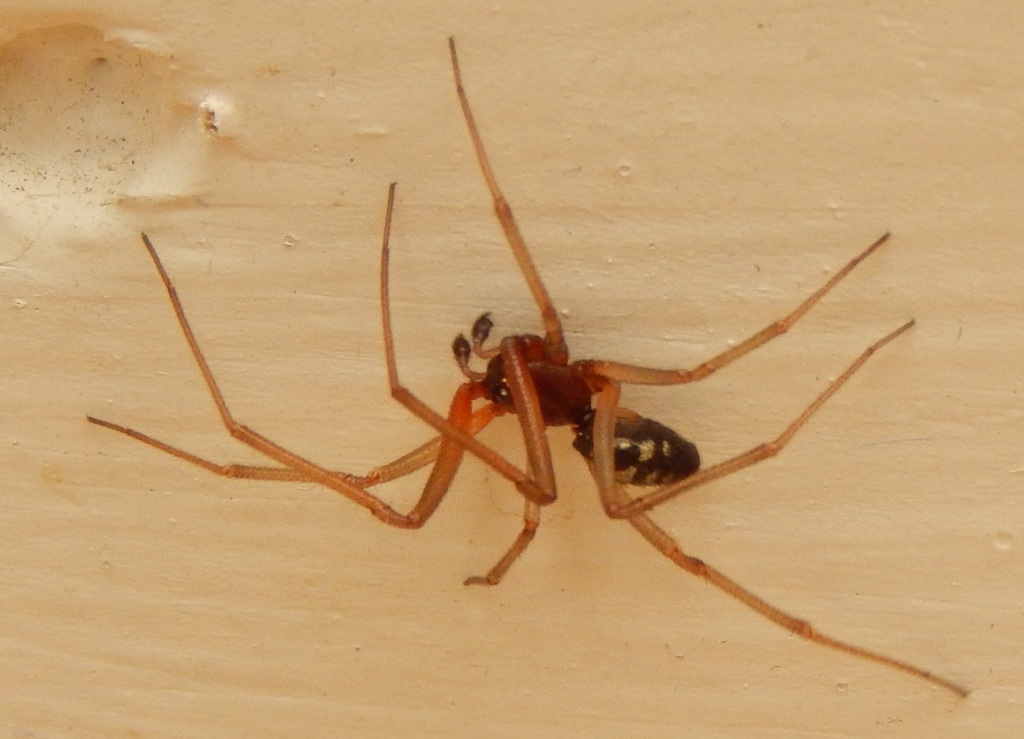
Zebra Spider
Salticus scenicus, the Zebra Spider is a small spider, common throughout the Northern Hemisphere. From the family of jumping spiders, Salticidae, his spider gets its name comes from its stripy appearance. The Latin ‘salticus’ and Greek ‘scenicus’ mean ‘dancing’ and ‘theatrical.’
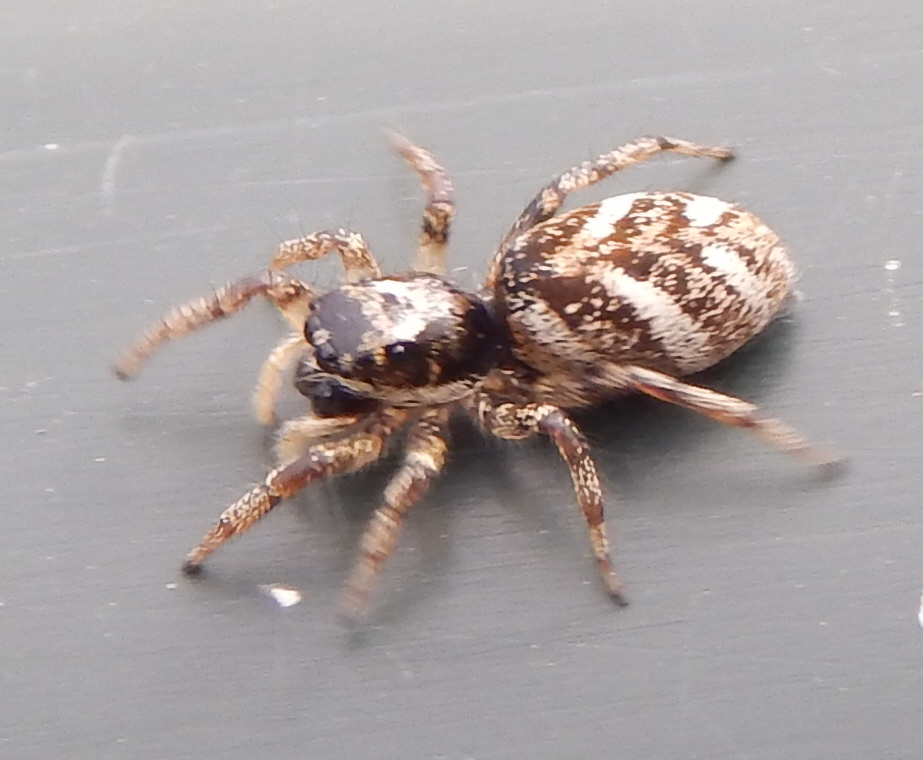
They have very good eyesight and are often found close to humans – on walls or fences or behind curtains indoors. They hunt like cats – approaching slowly and then pouncing.
Apart from the Garden Spider, they are the only spider I have seen several times outside homes
Names
I have said what I can about the specific names of species but many Scientific Names have no apparent origin.
Other Notes
All spiders can bite but they very rarely have a reason to do so. No spiders found in Britain are in any way dangerously poisonous. [Whenever the subject comes up on social media there are discussions on the precise definitions of ‘venomous’ and ‘toxic.’ But spiders won’t harm you by biting you and you won’t die from eating one.]
See also
There are several hundred species of spider found in Britain from 37 or 38 families. If you are interested you can buy Field Guides.
Two more species will come in May and September.
